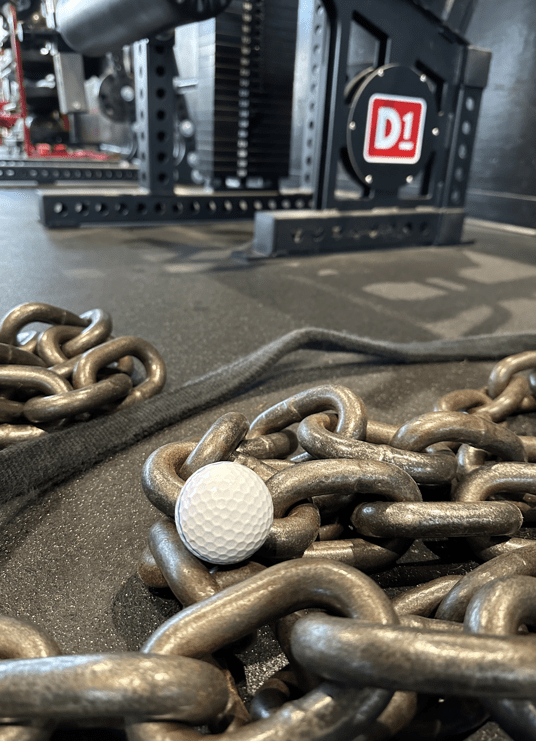Why Great Golfers Strength Train

Golf season is in full-swing (pun intended) and whether you’re gearing up to watch this season’s big tournaments or just looking to get back on those tees this spring, strength training is a great way to improve both your golf game and your overall health.
Ever wondered why the world's best golfers hit the gym?? Well, there is a lot more to that golf swing than meets the eye. Multiple muscles and muscle groups are used in each of the four phases of a golf swing. Let’s break them down:
Address and Backswing: Hello trapezius! This is your main mover during this swing phase, along with abs, hamstring, and the supporting muscles of the rotator cuff.
Downswing: Your glutes and hamstring are fully contracted during this move, while your back (trapezius), chest (pectoralis major), obliques, quads, and forearm flexors bring the power down to the ball. These same muscles move right through the Impact part of the swing, its third phase.
Follow-through: It’s time to decelerate the move, and that work falls on the shoulder muscles (left infraspinatus and right subscapularis, depending on which side is dominant), while the glutes, quads, groin, and hamstrings work together to stabilize the lower half of the body.
With all those muscles firing, it’s easy to see why golfers are considered as athletic as any other player. Today’s professional golfers utilize strength training to play a higher level of golf than ever before.
Strength training can help improve athletic performance in more ways than just helping to build bigger muscles. Looking to increase clubhead speed? Strength training can help. Looking for the endurance to finish a full 18 holes without the cart? The right training can help with that too.
Chad Barribeau is the Director of Corporate Stores at D1 Training, a former strength and conditioning coach, and an avid golf player and enthusiast. He says, that when it comes to strength training, it’s important to remember, “Strength is the foundation from which all other physical qualities of performance, like power and speed, are developed. Each of these are musts to compete at the elite level.”
Strength training also helps improve flexibility and even helps reduce the number of golf-specific injuries players deal with by 33%. With stronger, more developed muscles, form isn’t compromised because of weakness or fatigue. Having enough strength ensures proper technique for longer periods of time, which leads to less injuries.
So how does the next top pro golfer strengthen the muscles needed to improve their game? They need to work them! For those unfamiliar with strength training, it’s important to talk with a pro.
(Be sure and check with your physician or trainer before beginning any exercise program, including strength training)
Ask a coach or trainer about exercises like:
A Dynamic Warm Up: Blood needs to get flowing to the muscles you’re about to workout, and your body temperature needs to go up. Coach Ryan and athlete Alexa from D1 Huntington Beach demonstrate an ideal warm up to get your body ready to strength train.
Lunge with Chest Opener: For this adaptation of a regular lunge, you’ll need a pole, broomstick, or even handier, a golf club! Standing with feet shoulder length apart, hold the pole out in front of you like you’re holding onto the handles of a bicycle. When you lunge one foot forward and bend at the knee, before returning to a standing position, raise the bar up and back over your head, as far as your flexibility will allow, to open the chest and shoulders. Bring the bar back down in front of you, then return to the starting position.
Trap Bar Deadlift: A deadlift can help to stabilize the lower half of your body during the follow through phase of a swing. Watch Austin and Coach Coy from D1 Training Malvern show the best technique when performing a trap bar deadlift.
Lastly, never finish (or begin!) a strength training session without stretching. Resistance bands are a great way to gently stretch joints that have tightened up overnight or between workouts.
Golf is about more than being able to drive a golf ball the furthest. Yes, it helps to have better rotational power or to increase your grip strength, but it’s also about enjoying the game for years to come, whether competitively or socially. Keeping your muscles strong will keep your bones strong, which will keep you playing longer.
